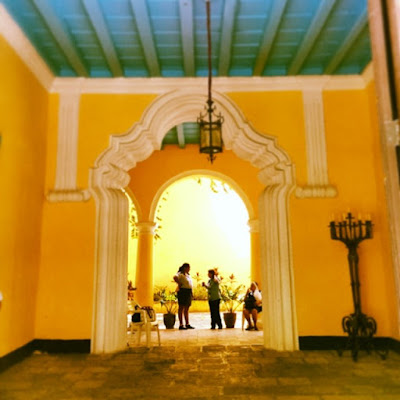Why I Traveled to Cuba ( traducido al español)
Written by Sophia Bass, translated below by Izzy Valdés.
After the revolution in the 1950s, Cuba became somewhat of a mystery to the outside world. As someone who studied in Florida and lived in Ecuador during graduate school, I desired to travel to Spanish speaking countries where I could practice my knowledge of the language and immerse myself in the culture. Cuba had always attracted my attention.
While living in St. Petersburg, Floridasa
I knew that understanding Cuba in 2017 would require seeing it through the eyes of the younger generation. Architects, dancers, musicians, and artists are paving the way for a more expressive and individualistic Cuba for the first time in decades.
It is brilliant to speak with younger folks in Cuba who are so open to change. Younger men and women in Cuba hope for a future where their families can own businesses, create restaurants, and manage artisan shops without resorting to the black market.
I think Cuba is attractive to young travelers from the United States because so many of us grew up around Latino culture. If you’re from Texas, you are accustomed to Mexican cuisine. If you are from Miami, you are probably familiar with music from Old Havana. If you are from Los Angeles, you may have grown up with Columbian and Guatemalan neighbors. Latino culture is present throughout our daily life as United States citizens. Cuba being just 90 miles from the Florida coast is our neighbor we have always wanted to explore.
If you’re interested in traveling to Cuba this winter or spring, check our website for trip dates and itineraries.
Por qué viajé a Cuba.
Luego de la Revolución de los 50s, Cuba se convirtió en un misterio para el mundo exterior. Como alguien que estudió en la Florida y vivió en Ecuador, deseaba mucho viajar a países de habla hispana donde pudiese practicar mi conocimiento idiomático y sumergirme en la cultura. Cuba siempre había atraído mi atención.
Como viví en San Petersburgo, Florida durante cuatro años, estaba acostumbrada a la comida cubana: cerdo, arroz y frijoles, para el almuerzo. Mi restaurante favorito en el pueblo servía el más delicioso café cubano. El aroma de la comida y la amabilidad de la gente continuaron incentivando mi interés en viajar a Cuba en el futuro cercano.
Sabía que comprender Cuba en 2017 requeriría verla a través de los ojos de la generación más joven. Arquitectos, bailarines, músicos, pavimentan el camino hacia una Cuba más expresiva e individualista por primera vez en décadas.
Resulta brillante hablar con jóvenes compañeros en Cuba que están tan abiertos al cambio. Jóvenes hombres y mujeres esperan un futuro donde sus familias puedan poseer negocios, crear restaurantes, y gestionar tiendas de artesanías sin tener que recurrir al mercado negro.
Considero que Cuba es atractiva para viajeros jóvenes de EE.UU porque muchos de nosotros crecimos rodeados por la cultura latina. Si eres de Texas, estás acostumbrado a la cocina mexicana. Si eres de Miami, probablemente estás familiarizado con la música de la Habana Vieja. Si eres de los ángeles, puede que hayas crecido junto a vecinos colombianos y guatemaltecos. La cultura latina está presente en nuestra vida diaria como ciudadanos estadounidenses. Cuba, estando tan sólo a 90 millas de la costa de la Florida es esa vecina que siempre hemos querido explorar.
Si está interesado en viajar a Cuba este invierno o primavera, revise nuestro sitio web para conocer fechas e itinerarios.




Comments
Post a Comment
Thanks for taking the time to write a comment! You can also share our blog on Facebook or any other social media that you use. Spread the joy!